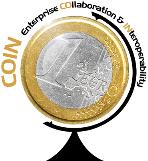SEE Unit - Projects
-
 SUPPORT
SUPPORT -
 Prelida
Prelida -
 Sofar
Sofar -
 Peer Assist
Peer Assist -
 Service bundler
Service bundler -
 Service detective
Service detective -
 COIN
COIN -
 SemBiz
SemBiz -
 ASG
ASG -
 DIP
DIP -
 SEEMP
SEEMP -
 TripCom
TripCom -
 Knowledge Web
Knowledge Web -
 SemanticGov
SemanticGov -
 SUPER
SUPER -
 SWING
SWING -
 SHAPE
SHAPE
A brief descriprion of the projects our members were involved in:
Single European Employment Market-Place (SEEMP) |
 |
|
The mission of the present SEEMP (Single European Employment Market-Place) proposal is: to design and implement in a prototypal way an interoperability architecture for public e-Employment services which encompasses cross-governmental business and decisional processes, interoperability and reconciliation of local professional profiles and taxonomies, semantically enabled web services for distributed knowledge access and sharing. In particular, the SEEMP project will develop an EIF-compliant federated architecture and interoperability middleware as well as applicative plug-in services to allow existing National/Local job market places and data warehouses to be interoperable at pan-European level by overcoming state-of-the-art limitations. |
|
Service bundler |
|
|
The mission of the Service Bundler project is to study, design, develop and prototype an open, self-adaptive and generic SaaS (Software-as-a-Service) integrated platform with its primary research focus on composition and monitoring of services. We will develop a Service Bundler business-pervasive platform that will enable to integrate, compose and expose in a secure and adaptive way innovative services. This will be done by applying business rules and self-adaptive decision-support guidelines to guarantee the best combination of the needed services by taking into account the business context. The role of the Service Bundler project would be to provide a set of core technologies for the base seekda Service Platform. We aim to allow the use of abstract process templates – enabling the composition of available Web Services – such that, with the support of a monitoring mechanism, they can be executed consecutively without any user interaction in-between. Even if some of these services would not perform as initially expected, these should remain transparent to the end user. From an external perspective, such a composition (or bundle as we call it in this proposal) of services would act like one service, offering a specific eCommerce functionality. The fact that this functionality is only reached after executing multiple services should be hidden behind seekda’s platform. |
|
















